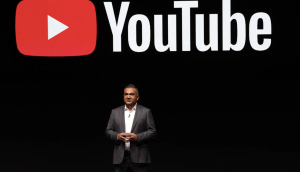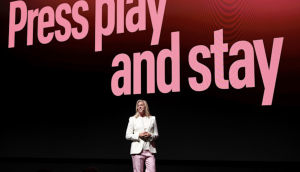Before I get to the winners at the second annual Venice Festival of Media, I might say that the opening session started with the highly anticipated, ‘Agency CEO Hot Seat Sessions.’ The problem was that the only real hot questions came from the audience, not the moderators.
There were some mutually agreed upon, rather generic, topics such as the need to invest in talent as the best way to respond to the new demands in our businesses, and that media agencies are best positioned to take the new strategic lead in brand strategy development.
Participants were: Nick Brien, worldwide CEO, Universal McCann; Jack Klues, chairman, Publicis Groupe Media; Mike Cooper, CEO, PHD Worldwide; Steve King: worldwide CEO, ZenithOptimedia; Mainardo de Nardis: CEO, Aegis Media Group; Alexander Schmidt-Vogel CEO, Mediacom worldwide; Maria Louisa Francoli, CEO, MPG; and Dominic Proctor, CEO, MindShare worldwide.
Things got warmer when the always-delicate topic of rebates, or AVBs, was raised by the audience – which the moderator immediately referred to as ‘the elephant in the room.’
I was very impressed with how Dominic Proctor addressed this question head on. ‘It is a valid source of income in some countries,’ he stated, adding that ‘as long as it’s transparent, then it should and must be accepted.’ I was also pleased to hear Alexander Schmidt-Vogel say how ‘It has come time for media agencies to have the courage to say no to unreasonable demands by clients to cut costs.’
The audience raised another interesting topic when it was pointed out that only one of our industry’s global CEOs is a woman – when our industry consists of roughly 60% women. I am personally pleased to know that this is not the case in Canada, where some of our industry’s top CEOs (country managers) are female.
After lunch, I attended what I believe were the two most interesting seminars of the Festival. One was ‘Playing Around. . . Advertising Through Gaming,’ for which the speakers were: Damien Blackden, digital president EMEA, OMD; Dario Raciti, gaming leader, OMD Digital; Reuben Steiger, CEO millionsofus; and Cory Van Arsdale, CEO of Massive Inc. (part of Microsoft).
I think we all know that media investments in gaming platforms will never be at the cornerstone of our clients’ media plans. But it was truly interesting to learn how some clients can and do benefit from this investment.
Realism is the focus and goal within the gaming community, and the reality is that brands are a part of our lives. Whether it’s test-driving the latest Nissan in Second Life, or using your Xbox to race it in Red Bull’s latest online rally, brands exist everywhere – so for virtual worlds to be realistic, brand must continue to be present.
A key element of this discussion was that gaming provides a frequency of product placement like no other, as the average gamer spends 11 hours per week gaming and often plays the same one over and over. Compare this with cinema, where today’s movies are filled with product placement but movie-goers rarely see the same movie twice.
The most notable brands that have benefited from the gaming medium are, to name only a few: Red Bull, Nissan, Doritos, Vodaphone, McDonald’s and Coca Cola.
Sony plans to launch ‘Home’ in 2008, a virtual Second Life- styled game which will link all of Sony’s Playstation users around the world. This is a further illustration of how gaming communities and platforms have a global reach – while most traditional large-scale advertisements are merely nationally.
The biggest problem with the gaming medium is that clients don’t believe in its potential. They don’t realize that games offer certain target audiences a truly first-hand experience with their brand. Hmmm… . I seem to remember some clients questioning the Internet’s potential during its infancy as well.
The other problem is that gaming publishers’ income is predominantly driven by subscriptions and virtual world purchases rather than advertising. So there is still a learning curve for the publishers to recognize the benefits of making their designs more media-investment-friendly.
Speakers at the closing session, ‘New Media Business Models,’ were: Joanne Bradford, EVP of national marketing services at Spot Runner; Brett Brewer, president, Adknowledge and co-founder of MySpace; Carl Johnson, CEO, Anomaly; Greg Nelson, GM/chief media officer, MSN (part of Microsoft); and Anssi Vanjoki, EVP/GM, multimedia at Nokia.
Wow, I thought. New business models. Should we be afraid? Is Spot Runner a competitor to our media businesses, ad agencies, or both? Has Anomaly finally been the one to convince clients that the value of a creative idea is not based on salary percentages plus a multiple to cover time, social charges and overhead? Is Adknowledge going to run our online businesses out of business one day?
I’ll just touch on two of the presentations, in order not to ramble on and on, as I was told that videos of all presentations will soon be available on www.CMDglobal.com.
I personally knew that something interesting was going on at Anomaly a couple of years ago, when a former classmate of mine at The Creative Circus – then co-creative chief for Wieden & Kennedy’s cornerstone Nike Account – left to join Anomaly. Anomaly’s business model is truly revolutionary for the ad industry. I was a creative and then went on to become CEO of an ad agency, and I’ve struggled with the subject of having to convince clients of the value of the creative process.
What we keep hearing is: ‘Time sheets reward the wrong behavior. Agencies should be rewarded for the quality of the idea.’ But I believe ad agencies of the future should own, not just simply create, intellectual property, and Anomaly has successfully positioned itself to do so. Be it through revenue sharing, royalties or actual partial ownership of brand launches, they have successfully positioned themselves as agencies that don’t merely makes ads, but solve business problems.
And now, with the advent of Spot Runner, every Mom and Pop store can make their own ads and place them on TV. Fully-personalized, 30-second ads start at less than $500!
During Bradford’s presentation, for example, she showed a commercial she’d made the night before in her hotel room. Although it won’t win at Cannes, it was truly amazing to see how SMEs can now bypass ad and media agencies to create and place their own TV spots. I think most of us know this company already, but if you don’t, I strongly suggest you check it out: www.spotrunner.com.
My overall impressions of year two of the Venice Festival of Media? I was most impressed with the transformation Microsoft has gone through over recent years. It’s truly no longer just a software company. It fully understands the digital future and is well positioned to improve the way we live our lives, and the way we service our clients in the new modern digital world. I say: Come on Yahoo, think it over!
Who were the big winners? C Squared, the parent company of the festival, Cream Magazine and CMDglobal.com, and Media & Marketing announced its round-up of the best in media innovation for 2008 in a unique one-off publication, ‘Cream of Venice,’ which was distributed exclusively at the festival. In the publication, Cream editor Alastair Ray, of CMDglobal, states that its goal ‘is to create a gold standard for creative media and showcase the smartest thinking around.’
Agency Network of the Year: OMD
Advertiser of the Year: Unilever
Campaign of the Year: Nike Zoom, MindShare (media) and Wieden + Kennedy (advertising)
Agency Office of the Year: Starcom, Sweden
In addition to these four honours, 15 ‘Cream Picks’ where chosen. A full description of the winners and examples of excellence can be found at www.CMDglobal.com.
John Domas is CEO of Toronto-based MPG.























